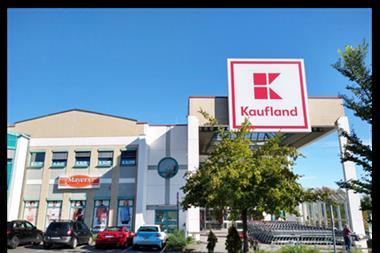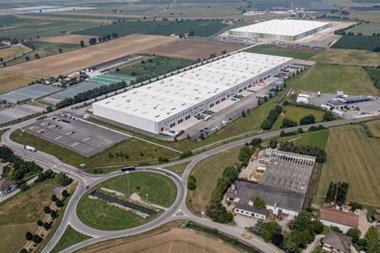Logistics real estate occupiers are turning to technologies, such as automation, that raise the energy requirements for new buildings by up to five times, according to research by UK listed real estate investment trust (REIT) Tritax Big Box.
Tritax’s head of research Henry Stratton told IPE Real Assets that occupiers were increasingly looking to adopt energy-intensive technologies as a solution to UK labour challenges – such as declining economic activity and rising employment costs owing to increases in employers’ national insurance and the minimum wage.
Tritax’s Future Space Focus Power On report examines the impact of UK labour challenges and their implications for UK logistics real estate. “Occupiers are trying to make their assets more productive by introducing labour-enhancing technologies, which are energy intensive,” said Stratton.
“While a large-scale, fully-automated warehouse can potentially absorb five times the electricity of a traditional warehouse on a per sqft basis, a company with a relatively simple, predominantly manual supply chain operation could double its energy needs by just switching to electric [heavy goods vehicles]. The energy requirements are increasing in ways that many had not anticipated.”
These increasing demands sit within a broader drive towards electrification – including the electrification of fleets – which is contributing to higher energy absorption, Stratton said.
![Henry Stratton (file_148)[39]](https://d15duu1h3gsd2d.cloudfront.net/Pictures/480xAny/7/3/0/1331730_henrystrattonfile_14839_2782_crop.jpg)
“Power has come to the fore in many different ways in the logistics sector. Many occupiers are in the process of fleet transition,” he said. “They are also seeking full electrification of the infrastructure to meet net-zero-carbon objectives. Increasingly, the most important question for an occupier to ask is: how can we generate and retain power on site and do we have enough power for our medium-term aspirations?”
Tritax estimates that about 40% of existing stock in the UK was built in the past 10 years and has been developed with power requirements in mind. The other 60% is older and offers potential for asset management initiatives. Its report also points to an increasing amenitisation within logistics real estate as occupiers seek to make buildings more attractive for workers.
Stratton said: “We are seeing occupiers looking to implement measures to retain labour in a constrained market. They need to attract and retain a different mix of people than the past, because increased technology adoption shifts workforce composition to include higher skilled labour, such as software and hardware technicians.”
Head office functions like HR, finance and IT are increasingly onsite, while amenities such as showers, changing rooms, canteens and even gyms and onsite recreational spaces are being introduced.
“Getting the right mix of amenities and the right percentage of office space is crucial for a successful building,” says Stratton. The proportion of office space for modern logistics buildings typically range between 5% and 10%, he added.
“Power, people, planning and – as ever – place are priorities for logistics occupiers and for investors looking to future-proof their assets. Buildings must meet these requirements today, with the flexibility to accommodate more change tomorrow.”
To read the latest IPE Real Assets magazine click here.


















